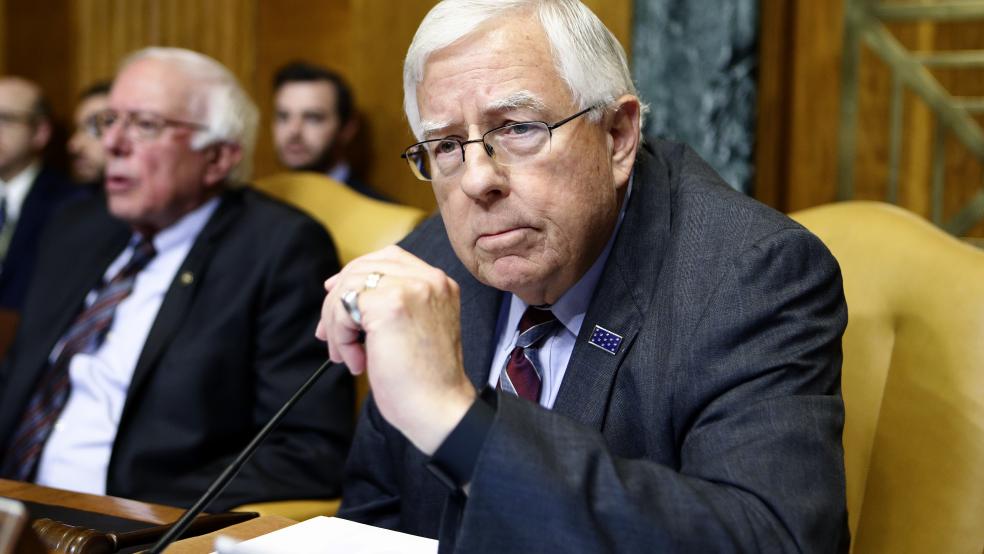Senate Budget Committee Chairman Mike Enzi (R-WY) on Friday unveiled a fiscal 2020 budget resolution that would allow automatic spending cuts set to kick in, sharply decreasing both defense and non-defense spending, while rejecting the rosy economic assumptions in the president’s budget and a gimmick it would use to boost military funding.
The budget blueprint would bring spending in line with caps set under the 2011 Budget Control Act, putting defense spending at $576 billion and nondefense spending at $543 billion. Those levels represent a reduction of $126 billion from 2019 levels agreed to under a bipartisan deal last year.
Here’s what else you need to know.
It’s aimed at reducing the deficit: The draft, which will be voted on by the Budget Committee next Thursday, veers from past Republicans proposals by covering five years instead of 10. And rather than aiming to reach balance, as other budgets have done by using overly rosy projections and gimmicks, it proposes to trim deficits by more than $538 billion over five years and keep annual deficits from reaching $1 trillion. Under the proposal, the deficit would shrink from a projected $903 billion this year to $748 billion in 2024.
“Strengthening America’s future for our children and grandchildren begins by putting our nation on a more sustainable fiscal path and reducing our nation’s deficit spending,” Enzi said.
A path to $750 billion for defense: Trump’s budget, released earlier this month, called for increasing overall defense spending to $750 billion next year. But it did so by stuffing nearly $100 billion more into the Overseas Contingency Operation (OCO) fund, an off-the-books account meant for war fighting. The move, which would raise OCO funding from $69 billion this year to $165 billion in 2020, allowed Trump’s budget to technically stay within previously set spending caps due to take effect again next year. Budget watchdogs roundly criticized that as a gimmick.
Enzi’s budget would provide $67 billion for the OCO fund, bringing overall defense spending to $643 billion — or about $73 billion less than 2019 levels and more than $100 billion shy of Trump’s request. But the Senate proposal would allow defense spending to rise to $750 billion under a deal to lift spending caps as long as the extra spending was offset by cuts or added revenue elsewhere.
Other spending cuts: The resolution would cut nondefense spending by $54 billion compared to 2019 levels. It would slow growth in mandatory spending on programs such as Medicare by $551 billion over five years. It would also have lawmakers find $94 billion in additional deficit reduction over five years.
Why it matters: The Senate, like the House, may not try to pass a budget this year, and Republicans and Democrats aren’t likely to strike an agreement over this plan. Still, Enzi’s proposal represents the Senate GOP’s opening bid in the coming negotiations over spending levels and the automatic cuts that are set to kick in again next year unless Congress lifts them once more — negotiations that could also determine whether lawmakers and the White House engage in another shutdown showdown as we approach the start of the fiscal year in October.





